Homo rudolfensis
|
|
EUGENE M. MCCARTHY, PHD
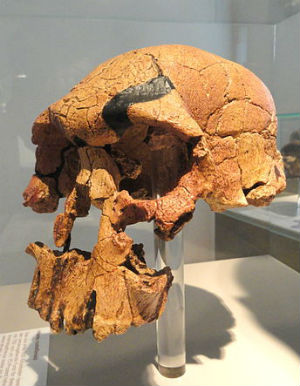 |
|
Homo rudolfensis (Enlarge Image) |
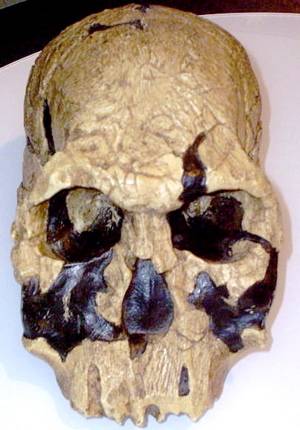 |
|
H. rudolfensis Museum of Man, San Diego
Image: Durova |
In general, all non-australopithecine remains from Olduvai Gorge have been assigned to Homo habilis, whereas those from Lake Turkana are attributed to either Homo habilis or Homo rudolfensis.
The type specimen of H. rudolfensis is Skull 1470 (KNM-ER 1470) found by Bernard Ngeneo at Koobi Fora* in 1972, on the eastern shore of Lake Rudolf, now Lake Turkana, in northwestern Kenya (Leakey et al. 1973). He was working at the time with a group led by Richard and Meave Leakey. The specimen has an age of at least 1.89 million years, although it was initially assigned a far earlier date in error — 3 mya, at the time earlier than any australopithecines known. The result was a storm of debate.
Since it was found 45 m below the KBS tuff, which is known to date to 1.89 mya, the skull may be significantly older than the tuff itself. Conceivably, it could date back to as early as 2.5 mya, which would make it contemporary with the earliest H. habilis specimens. There is no postcranial material known. Nor has much been ascertained about the diet of this hominid on the basis of tooth wear due to the paucity of available fossil remains.
| Fossils tentatively assigned to Homo rudolfensis | ||
| # | Type | Locale |
| KNM-ER 819 | Mandible | Ileret |
| KNM-ER 1482 | Mandible | Koobi Fora |
| KNM-ER 1483 | Mandible | Koobi Fora |
| KNM-ER 1490 | Mandible | Koobi Fora |
| KNM-ER 1801 | Mandible | Koobi Fora |
| KNM-ER 1802 | Mandible | Koobi Fora |
| KNM-ER 3732 | Cranium | Koobi Fora |
| KNM-ER 3891 | Skull fragments |
Koobi Fora |
Homo rudolfensis: Incertae sedis?
Originally, Skull 1470 was described as Homo habilis, and was first assigned to a newly erected Homo rudolfensis only in 1986. This arrangement has seen increasing favor, but in the last few years some researchers have asserted that 1470 is similar to the more recently discovered fossil KNM-WT 40000, Kenyanthropus platyops (Leakey et al. 2001), and that it should be reclassified as such. However, other specimens, mostly mandibles, have been tentatively assigned to Homo rudolfensis (see table above). Moreover, it has been questioned whether Kenyanthropus platyops is actually distinct from the contemporaneous Australopithecus afarensis.
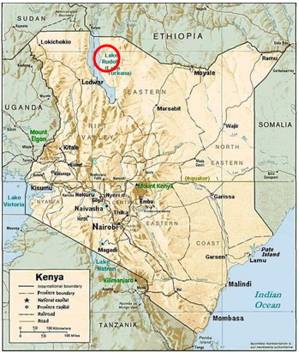 |
| Location of Koobi Fora |
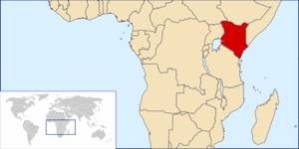 |
|
Location of Kenya Map: Vardion |
In August 2012, a team led by Meave Leakey announced the discovery of three additional H. rudolfensis fossils from northern Kenya: two jawbones with teeth and a face. These new fossils were about two million years old. Leakey et al. say these new finds "confirm the presence of two contemporary species of early Homo [that is, habilis and rudolfensis], in addition to Homo erectus, in the early Pleistocene of eastern Africa". However, not all paleoanthropologists are convinced.
Initially, the cranial capacity of KNM-ER 1470 (which stands for Kenya National Museum-East Rudolf) was estimated at 752 cc. But Bromage et al. (2008) reevaluated the skull and moderately reduced the brain-size estimate to 700 cc.
Many paleoanthropologists still do not accept Homo rudolfensis as a valid, distinct type of hominid. Is it, or isn't it? That no doubt will remain the question for some time to come.
Perhaps we are not from the apes alone?
Learn more >>
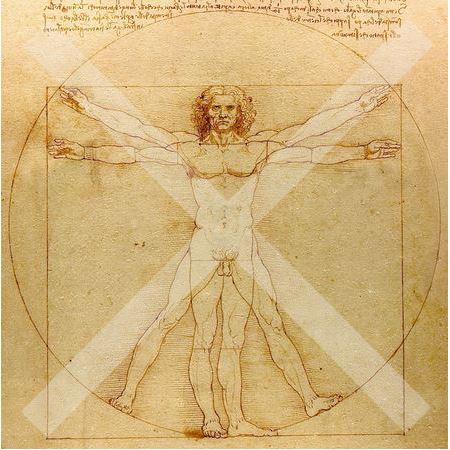
|
|
Pronunciation: HŌM-ō roo-dawlf-EN-səs. Etymology: The Latin word homo means "man" or "human being." The Latin suffix -ensis was added to to Rudolf from Lake Rudolf to produce rudolfensis, meaning "from the vicinity of (Lake) Rudolf". *Note: KNM-ER 1470 was found in Area 105 at site FxJj 1, nicknamed "KBS" for Kay Behrensmeyer site, after the researcher who first found stone tools there. |
Australopithecus bahrelghazali >>
Most shared on Macroevolution.net:
Human Origins: Are we hybrids?
On the Origins of New Forms of Life
Mammalian Hybrids
Cat-rabbit Hybrids: Fact or fiction?
Famous Biologists
Dog-cow Hybrids
Georges Cuvier: A Biography
Prothero: A Rebuttal
Branches of Biology
Dog-fox Hybrids